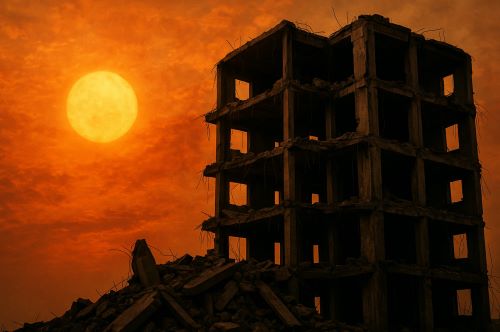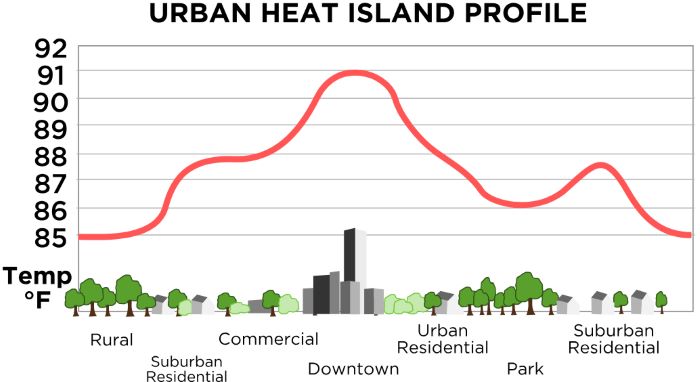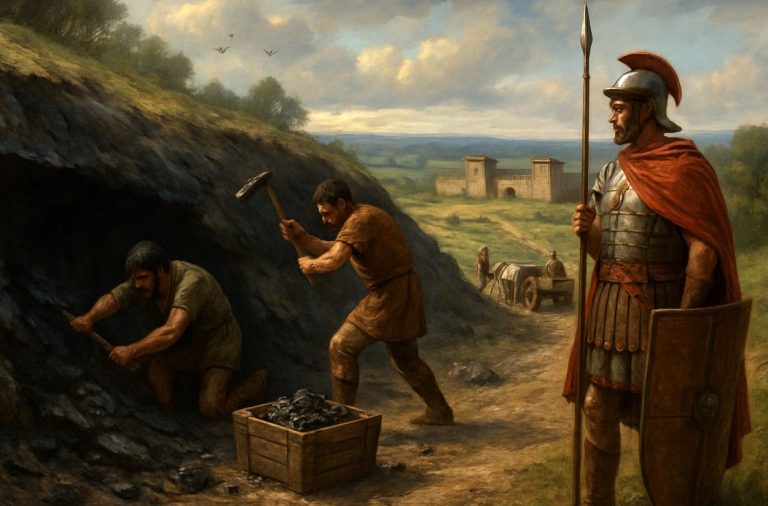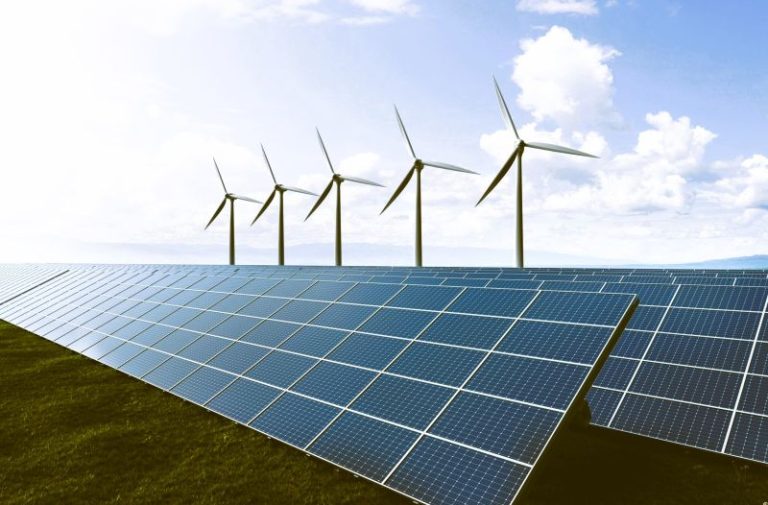

Heat is no longer the silent season. It is the signal. The planet is speaking through boiling rivers, blackouts, and bending bridges.

By Matthew A. McIntosh
Public Historian
Brewminate
A Summer That Snapped Steel and Melted Roads
In the summer of 2023, as temperatures in Phoenix, Arizona soared past 110°F for a record-breaking 31 consecutive days, it wasn’t just people who collapsed — it was the city itself. Asphalt softened like wax, power transformers exploded under the stress, and air conditioning units labored in a losing battle against the heat. It’s a glimpse into a future already arriving, a world where climate infrastructure, designed for the 20th century, is buckling under the 21st.
Across continents, that summer rewrote records with cruel precision. Rome hit 108°F. China’s Xinjiang province sweltered in 126°F heat. In Canada, wildfires unleashed so much smoke that New York City was briefly crowned the most polluted metropolis on Earth. These weren’t isolated weather events. They were signs of an interlocking planetary fever, made worse by decades of infrastructural neglect, misaligned policy, and the persistent belief that the systems we rely on would always hold.
They aren’t holding.
The Fragile Skeleton of Modern Life
Power grids were never designed for this. In places like Texas, the electric infrastructure is under exceptional strain. During the 2021 winter storm, the grid failed dramatically — but summer now poses its own slow-burning threat. As demand spikes with every household cranking the AC, substations overheat, transformers catch fire, and rolling blackouts become a rational strategy rather than a failure of planning.
In India, the story is even more dire. The World Bank estimates that by 2030, up to 34 million Indians could be at risk from extreme heat alone. The country’s energy systems — reliant on coal and vulnerable to water scarcity — are particularly ill-suited to sustained temperatures above 45°C (113°F). In 2022, Delhi’s power outages left hospitals scrambling to keep ICU patients alive during a brutal April heatwave.
And it isn’t just the power supply. Roads, railways, bridges, and even buildings are being tested in ways their architects never anticipated. In the UK, rail lines buckle when temperatures climb past 90°F, not because it’s unusually hot globally, but because British infrastructure was designed with temperate norms in mind. In France, the heatwave of 2019 caused segments of the Metro system to be shut down, while Germany’s Autobahns suffered stress fractures as expansion joints failed.
The heat doesn’t just wear things down. It breaks them.
Cities Are Not Designed to Breathe

Urban heat islands (dense concentrations of concrete, glass, and metal) can push city temperatures 7 to 10°F higher than surrounding areas. For low-income neighborhoods, this can mean lethal exposure. Trees are sparse, green space is minimal, and homes often lack insulation or reliable cooling. In cities like Los Angeles, mapping studies show that historically redlined communities are consistently hotter — a climate legacy born from racial and economic injustice.
The burden is not equally shared. Wealthier districts stay cooler thanks to tree-lined streets, reflective surfaces, and access to technology. But marginalized populations, often living in the hottest zones with the weakest infrastructure, are bearing the brunt of rising temperatures. People are dying more often because of it.
This is not an abstract climate projection. It’s structural violence, delivered by design choices baked into zoning codes, building materials, and decades of urban policy. And it’s playing out with deadly consistency from Cairo to Karachi, Chicago to Cape Town.
The Myth of Climate Resilience
Politicians love the language of resilience. It sounds strong, forward-thinking, like a bulwark against the coming storm. But too often, it’s little more than a buzzword. True resilience demands not just shoring up existing systems but radically rethinking how and for whom they are built.
Look at the paradox of air conditioning. It’s a lifeline in extreme heat, yet its mass adoption contributes to the problem. A 2018 study published in Nature Sustainability found that cooling devices already account for 10% of global electricity consumption, and that number is expected to triple by 2050. Unless those systems are powered by renewable energy, we’re in a feedback loop of survival: cooling ourselves by warming the planet.
Meanwhile, efforts to build “green” infrastructure, from heat-reflective roofing to permeable pavements and expanded tree canopies, remain underfunded and unevenly deployed. Even in the United States, the 2021 Bipartisan Infrastructure Law included only modest investments in climate-specific upgrades. And in the Global South, the financing gap is profound. Countries facing the worst heat impacts often lack the economic leverage to overhaul their cities without international support.
A Hotter Future Is Already Here
There’s a temptation to think of climate change as tomorrow’s problem. But the future is now. According to the IPCC, climate-linked extreme heat events that were once expected every 50 years now occur every decade. That’s on the lower end of warming scenarios. In reality, we are heading into uncharted terrain.
The price of heat isn’t just measured in dollars or degrees. It’s counted in lives lost, livelihoods disrupted, and systems pushed beyond breaking. And while mitigation remains critical, reducing emissions, curbing fossil fuel use, rethinking global consumption. We face an urgent imperative to adapt.
Adaptation is not passive. It demands vision, equity, and investment. It means cooling centers in every neighborhood, not just affluent ones. It means climate-proofing public housing. It means engineers designing for 120°F days as a baseline, not a fluke. It means finally listening to the communities who have been screaming about these realities for decades.
Conclusion: Beyond Crisis, Toward Reckoning
What we’re witnessing is not just a failure of infrastructure; it’s a failure of imagination. For too long, we assumed the built world would endure, that our cities and networks would rise to every challenge. But steel warps, wires melt, asphalt sags. And beneath them, the assumptions of permanence crumble.
This is a moment not just for emergency response, but for cultural reckoning. Heat is no longer the silent season. It is the signal. The planet is speaking through boiling rivers, blackouts, and bending bridges.
We can choose to hear it. Or we can keep patching a system not built to survive what’s coming. Let’s start building for the heat that’s already here.
Originally published by Brewminate, 07.14.2025, under the terms of a Creative Commons Attribution-NonCommercial-NoDerivatives 4.0 International license.


